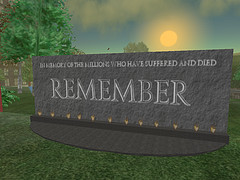Games are not going away. The gamepocalypse is nigh.
One of the biggest changes in the way we live and socialise at the moment is the rise and rise of game structures in everyday life. I’m not just talking points, badges and scores here – I’m talking about all sorts of game mechanics, the sorts of rich, rewarding dynamics that can help make reality better.
Games engage people. They provide the sorts of work that people want to do, using feedback systems and carefully structured designs to make for a fun experience. They provide a sense of satisfaction that’s hard to beat, from completing simple tasks to seeing a narrative through to its end. They let you explore and experiment, providing freedom within limits, and they reward players for developing skills or for learning information.
When it comes to journalism, stories – neat narratives with a beginning/middle/end or an inverted pyramid structure – are simply not sufficient for explaining most complex systems. They can explain a linear series of events, even one with complex factors, but they’re not good at really explaining how things work in a way that gets into the reader’s head. Climate change, or tax allocation, or the financial crisis, for instance.
Game design can be used to help create original reporting, as well as being a medium for its distribution. They can be used as powerful polemic or educational tools. And they can even be used to explore the process of newsgathering itself, illuminating its murky logic through the procedural logic of the game.
It’s not just video games that are important here, though they do have a wider reach than many other forms. Alternate reality games that merge fact and fiction to overlay a game onto the real world, or use real artefacts in a game environment, are growing as marketing tools. Board games have always had the widest reach (chess, anyone?) and are enjoying a niche resurgence. What could we do with them?
Journalists with game design skills are going to be needed, alongside journalists with data skills and journalists who can do video and code and take pictures. I believe that, once the nascent newsgames industry stops dipping its toes into the water and jumps in, newsgames are going to take off. Because a good game makes money. If we assume for a moment that engagement is king, not content, then games will win the war for our attention: doesn’t that look a lot like the situation we’re already in?
I want to see what we could do if we treated a printed paper as a site of play. If we made it fun, and thought about it from the perspective of someone exploring, learning, interacting with a game. It’s possible to be shocked, dismayed, distressed, saddened, touched, moved, and incited to action by good games that don’t dumb down their subjects. It’s possible to treat difficult subjects with respect within a game; there are myriad bad and good examples of this, just as there are of TV and of radio and of print.
And despite some assertions to the contrary, games are not inherently geared towards those who can’t pay attention (seriously, current 50+ hour game lengths of major studio titles obviously contradict this). Instead, games can make news harder, more complex, deeper and richer – and they might just be able to do all that while making money.
But news organisations aren’t there yet, and it’s not hard to understand why – MediaShift has a great analysis of the cultural divide between editorial and games design that’s proving insurmountable at the moment. As indie creators are creating games that explore the news journalistically, we’re in danger of missing the boat again.
So what I want to do, this year, is get some news people and some game people in a room, together, to see what we can do to bridge that gap. If you’re interested in being involved, let me know in the comments here or by emailing newsmary@gmail.com. Let’s build something fun.
This is the third of (I hope) four posts coming out of the Powerful Voices roundtable I attended earlier this month. The first was a resource-dump for concepts we discussed there and the second discussed the digital divide.


